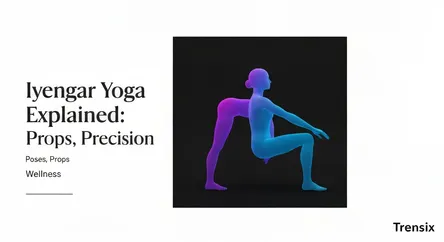Wellness
Iyengar Yoga Explained: Poses, Props, Precision

Discover Iyengar Yoga, a precise and mindful practice using props for optimal alignment, strength, and flexibility for all body types.
What is it?
Iyengar Yoga is a form of Hatha Yoga developed by B.K.S. Iyengar that emphasizes detail, precision, and alignment in every posture (asana). A key characteristic is the use of props, such as blocks, blankets, belts, and chairs. These tools allow practitioners of all ages and abilities to achieve the correct posture safely, holding poses for longer durations to build strength and flexibility. Unlike flow-based styles, the practice is more deliberate, focusing on the structural alignment of the physical body. Classes are methodically sequenced to ensure a safe and structured progression.
Why is it trending?
Iyengar Yoga's popularity stems from its accessibility and therapeutic approach. Its focus on precise alignment helps correct postural issues, making it highly beneficial for those with neck and back pain. The use of props makes challenging poses achievable for beginners and individuals with physical limitations, fostering a non-competitive and inclusive environment. As people seek more mindful and sustainable forms of exercise, Iyengar's methodical nature offers a practice that is both physically challenging and mentally calming. It builds deep body awareness and concentration, often described as "meditation in action."
How does it affect people?
Regular practice of Iyengar Yoga yields significant physical and mental benefits. Physically, it improves posture, balance, strength, and flexibility. The sustained poses tone muscles and can alleviate chronic pain by correcting musculoskeletal imbalances. Mentally, the intense focus required to maintain alignment helps calm the mind, reduce stress, and improve concentration. This heightened awareness fosters a stronger mind-body connection. Practitioners often report increased energy, vitality, and a greater sense of overall well-being and mental clarity.